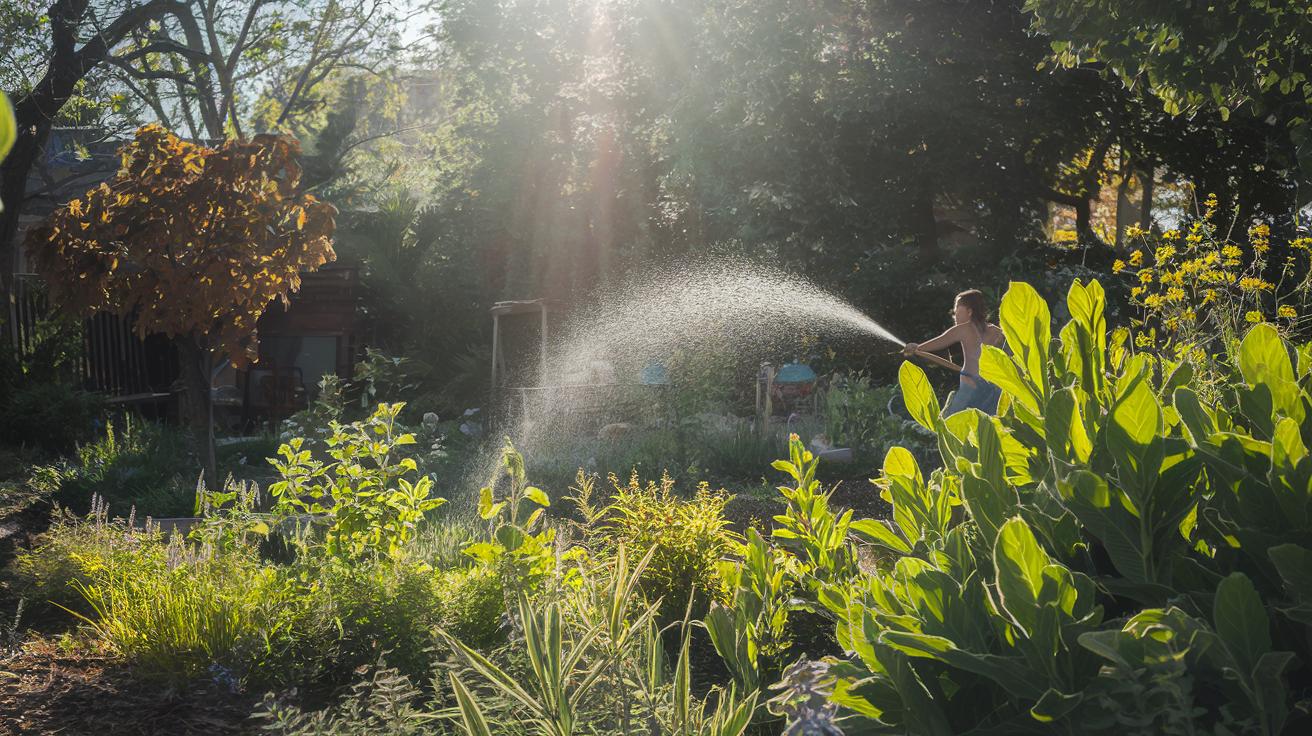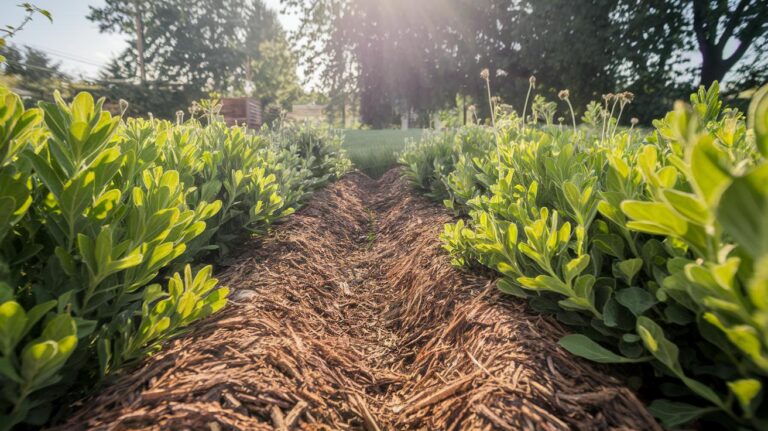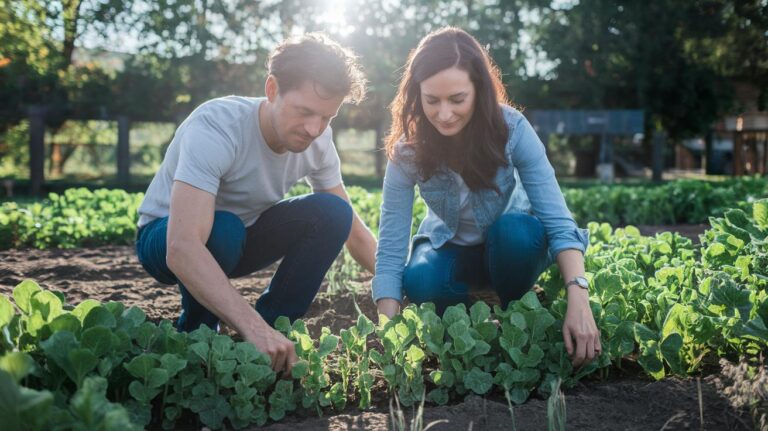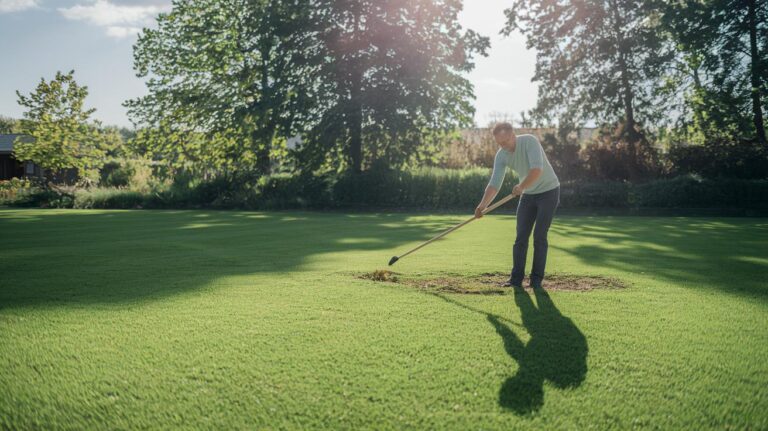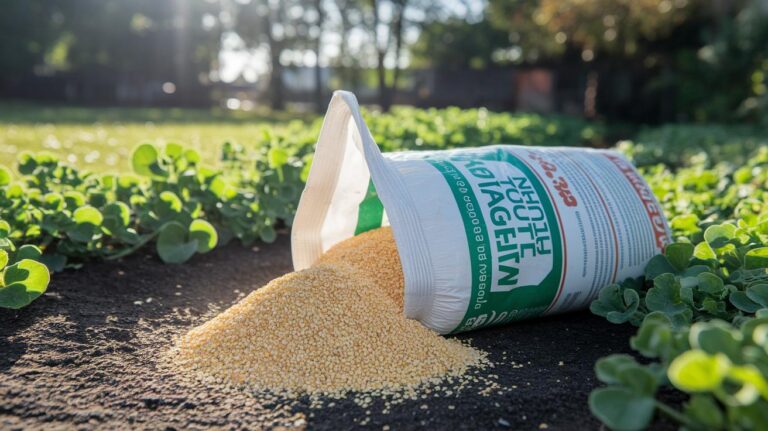Compost Tea Fertilizer Delivers Incredible Garden Results
Have you ever thought compost (decayed leaves and plant scraps that enrich soil) could be your garden’s superfood? It sounds a bit odd, but when you let that compost soak in dechlorinated water (water left out so chlorine evaporates), you get compost tea – a living brew of nutrients and friendly microbes (tiny, helpful living things).
All you do is stir in a little molasses (sweet syrup) and let the mix breathe for a day. Then you’ll be pouring billions of bacteria and fungi (microscopic helpers) right into your garden soil.
This simple homemade fertilizer gives your plants stronger roots, faster growth, and a better defense against pests. And the best part? Compost tea delivers amazing results without turning your backyard into a science lab.
Compost Tea Fertilizer Basics: Definition, Benefits, and Key Ingredients
Compost tea is a liquid fertilizer you make by steeping mature compost in water. Compost (decayed organic matter that enriches soil) gives up its nutrients and a bustling crew of microbes to the water. You end up with a living brew that your plants will love.
Have you ever caught that earthy aroma rising from a fresh batch? When you pour it into your garden, you invite helpful bacteria and fungi under the surface. They work together to strengthen roots and boost growth.
The ingredients are simple:
- Fully broken-down compost
- Water that’s been left out overnight so chlorine can evaporate
- A spoonful of molasses or a splash of seaweed extract to feed your new soil friends
By the way, I once forgot the molasses and got a weaker brew. Oops. The next batch was thicker than ever!
Here’s what compost tea does for your plot:
- Pathogen suppression on leaves and in soil
- Faster nutrient uptake by roots
- A crumbly, sponge-like soil texture
- Improved water retention in sandy or loamy beds
- A richer mix of beneficial microbes
- Less need for store-bought fertilizers
Brewing tea is more than a quick nutrient boost. As microbes multiply, they keep breaking down organic matter and even help fend off pests. It’s like a tiny garden party under your soil. Every watering becomes a mini revival. Ready to give it a try?
Essential Ingredients for Effective Compost Tea Fertilizer

Ever stuck your nose into fresh compost and felt that warm, earthy hug? Compost tea fertilizer is like a smoothie for your garden. You’re brewing a drink packed with helpful microbes. They’ll do the heavy lifting for your plants.
First, grab mature compost (decayed leaves and plant scraps that enrich soil). Think of it as a bowl of crunchy soil goodness full of bacteria and fungi.
Next, pour in dechlorinated water (water left out or filtered to remove chlorine). Chlorine can zap your microbial friends and mess with pH balance.
If you want aerated tea, get an aquarium air pump, some clear tubing, and a diffuser stone. It turns the tea into a tiny fountain that pushes oxygen right through.
By the way, my cat loves napping on the bucket.
Back to the tea.
Now comes the fun part – snacks for your microbes. Oh, this is fun! Stir in molasses (sweet syrup) for a quick energy boost. Add kelp (dried seaweed) to pack in trace minerals. You can also mix in fish hydrolysate (liquid fish protein) for nitrogen and humic and fulvic acids (natural soil helpers) to help roots soak up every drop.
| Ingredient | Function | Required/Optional |
|---|---|---|
| Mature compost (decayed leaves and scraps) | Feeds soil and fills it with helpful microbes | Required |
| Dechlorinated water (water left out or filtered) | Keeps microbes safe and maintains pH balance | Required |
| Aeration gear (air pump, tubing, diffuser stone) | Pumps oxygen in to boost good microbes | Required for aerated tea |
| Molasses (sweet syrup) | Quick energy boost for bacteria and yeast | Optional |
| Kelp (dried seaweed) | Packs in trace minerals | Optional |
| Fish hydrolysate & humic acids (fish protein liquid and soil helpers) | Adds nitrogen and helps roots grab nutrients | Optional |
Brewing Compost Tea Fertilizer: Aerated vs Non-Aerated Methods
Have you ever wanted a simple, natural boost for your garden? Compost tea is like a nutritious soup for your plants. You make it by steeping compost (decayed organic matter that enriches soil) in clean water. From there you can choose two paths: aerated or non-aerated tea.
Aerated Compost Tea Method
Grab a five to ten gallon bucket. Clip a fine mesh bag of mature compost into it. Hook up an aquarium pump with tubing and a diffuser stone. Then let it bubble for about 24 to 48 hours. Keep the water around 65 to 75°F so those good bacteria and fungi stay happy. Every eight to twelve hours give it a gentle swirl to spread oxygen and feed the microbes. These friendly microbes cling to roots, help plants take up nutrients, and even hold back harmful pathogens. Wow.
Non-Aerated Compost Tea Method
This way is low-key and easy. Drop a compost bag into a clean tub of dechlorinated water and let it steep for 48 to 72 hours. No pump needed. Give it a slow stir once or twice a day to wake up the microbes and stop clumps. You’ll get both aerobic and anaerobic bacteria. They still help your plants, but the mix isn’t as lively. Plan to use this tea within 12 to 18 hours or it might start to smell strong.
Both styles work great. If you’ve got an air pump and a day or two, the aerated tea packs in more beneficial microbes. If you’re short on gear or time, the non-aerated brew is ready with just a little stirring. Choose what fits your schedule and watch your garden thrive!
Essential Equipment for Crafting Compost Tea Fertilizer

Alright, let’s gather your gear! First, pick a 5 to 10 gallon food-grade container that blocks light so algae (tiny green water plants) can’t crash your brew. You want a dark home for all that good stuff to develop.
Clip in a fine-mesh compost bag (a cloth pouch with tiny holes that holds solid bits) so compost crumbs stay put when you stir. That way your tea pours clear and rich without clumps.
And here’s the fun part: add airflow. Hook up a small aquarium air pump (the kind fish tanks use) to clear tubing and a diffuser stone or ceramic disk. Those fizzing bubbles bring oxygen to the mix. I like adding a simple timer or aerator kit to keep them bubbling evenly.
Here’s a cleaning side note. After brewing, rinse every part in hot, soapy water and let it air-dry. Oops, once I skipped the bleach step and my pump smelled like a fish tank gone wrong! Don’t do that, swirl each piece in a mild bleach solution (one tablespoon per gallon), rinse well, and store dry.
Equipment snapshot:
- Stirring tool (like a long-handled spoon)
- Timer (to keep the bubbles on track)
Compost Tea Fertilizer Delivers Incredible Garden Results
Start with a clean bucket or watering can. Pour in your compost tea (a rich mix made by soaking decayed organic matter that enriches soil) and fill it with water. For tiny seedlings or herb pots, aim for one part tea to ten parts water, but for older veggies or flowers, ease back to one part tea to twenty parts.
Use a measuring cup or mark lines inside your bucket so your mix is spot on. When you sniff a sweet, earthy aroma, you know it’s ready! Oops, if your leaves look a bit sensitive, dial back to the gentler mix.
Feed your plants every week to two weeks so roots stay energized and leaves perk up. For a soil drench, pour the tea around each plant base until the warm earth feels moist but not soggy. By the way, my cat loves sunning on that damp soil, but back to your plants: they’ll lap it up.
And if you want leaf feeding, mist the tea on a cool morning and let the leaves dry before the midday sun. That fine spray coats the tiny hairs on leaves so nutrients slip right in. Before dusk, give your plants a glance to make sure no droplets are hanging overnight.
Compost tea plays nice with drip irrigation. Hook your bucket into drip lines and watch veggies in raised beds, pots, and garden rows slurp it up. If you’re using sprinklers, pop a strainer on your hose so no little bits get stuck. Then enjoy a soft mist sending life-giving microbes dancing across your flower beds.
In hydroponics, keep the tea bubbling so your helpful microbes stay happy in the reservoir (the system’s water tank). And for potted plants, grab a small pitcher and pour gently around each rim so roots can lap up the living brew, you know?
Monitoring Quality and Troubleshooting Compost Tea Fertilizer
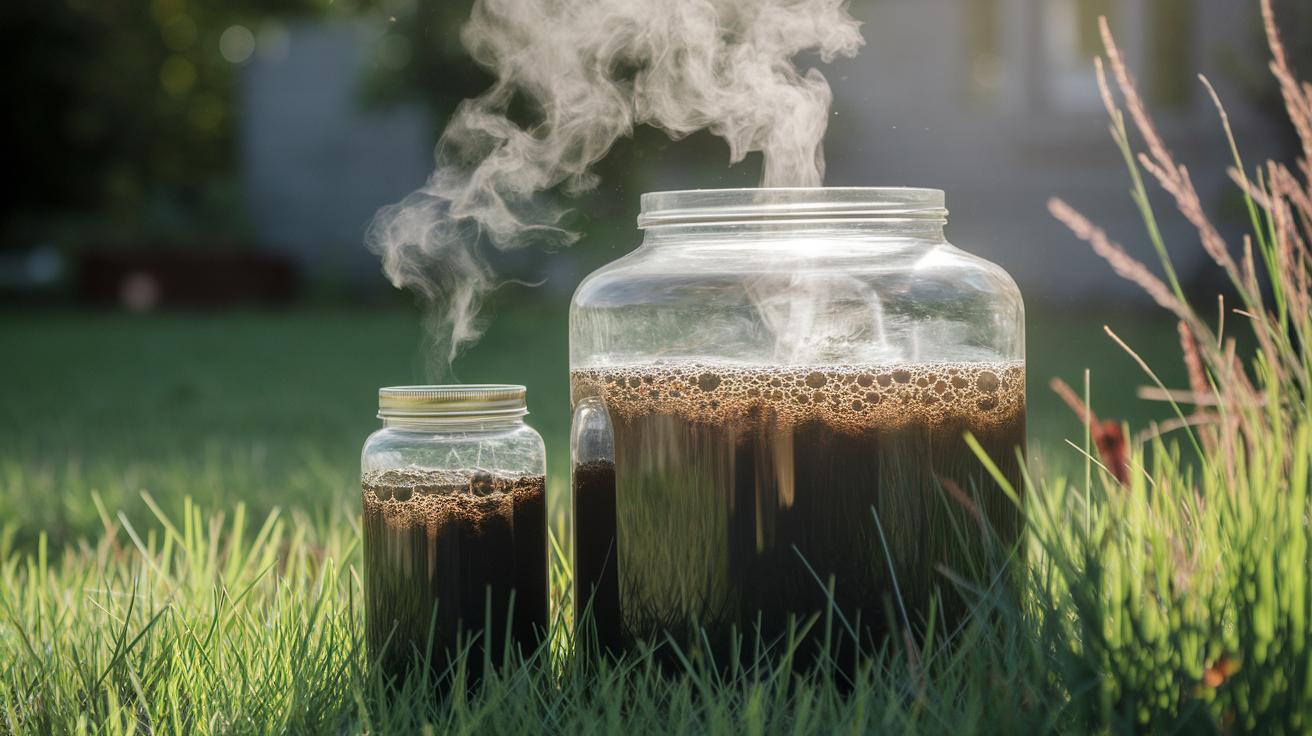
Give your compost tea (liquid fertilizer made by steeping compost in water) a quick sniff before each use. If it smells like fresh earth under your nails, you’re in good shape. But a sour or rotten scent means oxygen’s low or you’ve got unwanted guests in the batch. You can also dunk in microbial test strips (little strips that measure good bacteria levels) to see if helpful microbes are thriving. Skipping these checks lets bad bugs sneak in, so a little sniff and a quick test go a long way.
Watch the pH (how acidic or basic something is), too. You’re aiming for a pH between 6.0 and 7.0 so friendly bacteria feel right at home. If it dips below 6.0, stir in a pinch of agricultural lime (crushed rock that raises pH). If it climbs above 7.0, add a splash of vinegar to bring it back down. And don’t ignore the foam around your diffuser stone (the part that pumps air into the tea). Small bubbles are sweet, but thick foam means you’ve fed it too much organic matter and oxygen can’t flow.
By the way, I once let a batch sit without enough air and ended up with a flat, smelly brew, oops. Back to the fixes:
- If tea smells foul from low oxygen, run the pump longer or deep-clean air stones and tubing.
- If bacterial counts stay low because your compost wasn’t fully broken down, switch to mature, diverse compost and steep a fresh batch.
- If your tea spoils fast when you’re not using it, make smaller batches or store it in a cool spot (or briefly chill it in the fridge).
Environmental Impact and Organic Certification for Compost Tea Fertilizer
Using compost tea fertilizer really lightens your garden’s environmental footprint by ditching synthetic fertilizers and pesticides. It’s like treating your soil to a spa day, tiny microbes work their magic, turning nutrients into rich, crumbly earth you can feel between your fingers! Your garden’s soil community stays buzzing with worms, beetles, and helpful fungi, all locked in for a long-lasting, low-impact boost.
But if you’re brewing your own batch, here’s a friendly heads-up: make sure your compost (decayed organic matter that enriches soil), any add-ins, and water meet your local organic certification rules. Some store-bought mixes even carry an OMRI listing (Organic Materials Review Institute), but DIY brewers still need to track what goes in. Oops, I once forgot to label my alfalfa meal, lesson learned!
Keep a simple log: note each ingredient, the brew date, and slap a label on your bucket. By the way, my cat once tipped over my very first batch, I just stirred and relabeled! With clear records, you’ll breeze through any inspections, and your living tea will always count as an approved organic soil booster.
Planting now sets you up for a thriving, organic harvest.
Final Words
Right in the action, you learned what compost tea is and why it gives soil a friendly boost of microbes and nutrients.
You saw which ingredients and gear keep your brew bubbling, air pumps or simple steeps, plus the steps for mixing and applying.
We checked tips for timing, sniffing out trouble, and even talked eco perks and organic guidelines.
You’re all set to grow lush veggies and blooms with compost tea fertilizer!
FAQ
What is compost tea fertilizer and how does it benefit my garden?
Compost tea fertilizer is a liquid solution made by steeping mature compost in dechlorinated water to extract beneficial microbes (microorganisms) and nutrients that boost soil health and plant growth.
What ingredients do I need for compost tea fertilizer?
Compost tea fertilizer needs mature compost, dechlorinated or filtered water, plus optional amendments like molasses to feed microbes, kelp for minerals, fish hydrolysate for nitrogen, and humic or fulvic acids.
How do aerated and non-aerated brewing methods differ?
Aerated compost tea uses an air pump and diffuser for 24–48 hours to support aerobic microbes, whereas non-aerated tea steeps up to 72 hours without added oxygen, producing some anaerobic microbes and shorter freshness.
What equipment is essential for brewing compost tea fertilizer?
Brewing compost tea requires a 5–10 gallon food-safe container, aquarium air pump with diffuser stone, fine mesh compost bag, stirring tool, tubing, and routine cleaning of all parts to prevent odors or contamination.
How should I apply compost tea fertilizer for best results?
Compost tea fertilizer mixes at a 1:10 to 1:20 tea-to-water ratio and applies every 7–14 days by soil drench to boost roots or by foliar spray to feed leaves, and it works with drip or sprinkler systems.
How can I check quality and troubleshoot compost tea fertilizer?
Quality checks include a pleasant earthy smell and pH between 6.0 and 7.0. If tea smells foul, increase aeration or clean gear. For low microbes, use mature compost or brew smaller batches.
What environmental benefits does compost tea fertilizer offer?
Compost tea fertilizer reduces synthetic fertilizer use, supports soil carbon storage, enhances soil biodiversity, and cuts down on chemical runoff, keeping gardens healthier and more sustainable.
How do I comply with organic certification when using compost tea fertilizer?
Organic certification requires using inputs that meet standards, keeping records of compost and amendments, and choosing commercial blends with organic listings to simplify audits.

